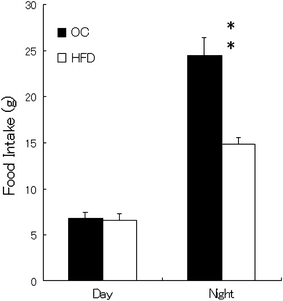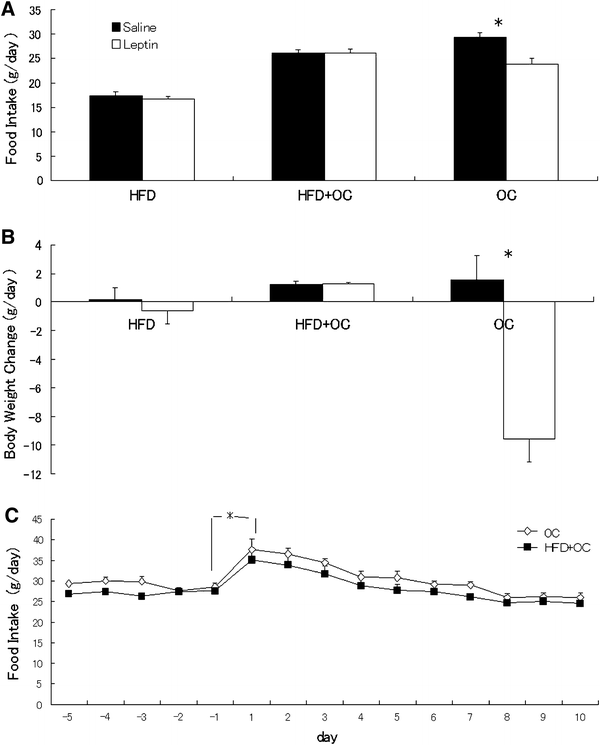Leptin resistance does not induce hyperphagia in the rat
- PMID: 22144345
- PMCID: PMC10717344
- DOI: 10.1007/s12576-011-0184-5
Leptin resistance does not induce hyperphagia in the rat
Abstract
Leptin has been thought to work as a mediator for body weight control by inhibiting food intake. Leptin, however, cannot prevent obesity induced by a high-fat diet (HFD) probably because of leptin resistance. We investigated daily feeding and weight gain when ordinary chow (OC) was changed to a HFD in male rats. Food intake, by weight, significantly increased the next day, but gradually decreased until at 20 days the HFD intake contained the same calories as consumed by the OC-fed control rats. The reduction in food intake occurred only during the night without change of preference for the HFD, even after leptin resistance had developed. Nonetheless, the HFD-fed rats gained more weight than the controls. From the present experiment, it is concluded that leptin resistance does not induce hyperphagia, and suggested that body weight is not regulated to be constant.
Figures




References
MeSH terms
Substances
LinkOut - more resources
Full Text Sources

